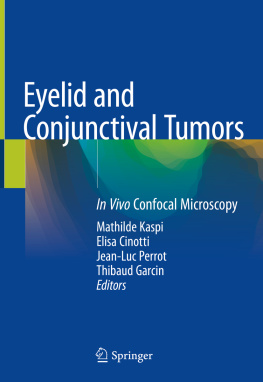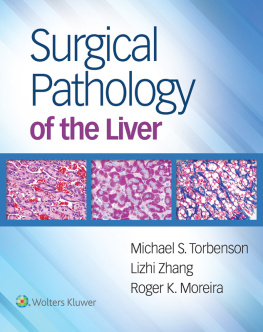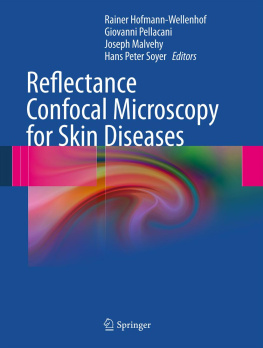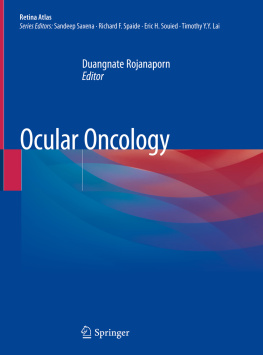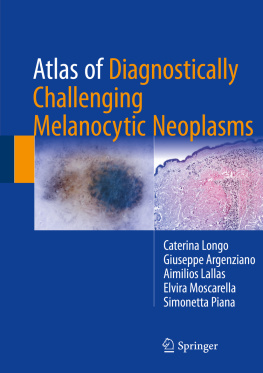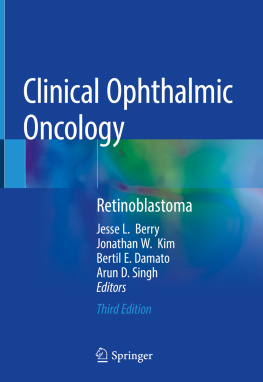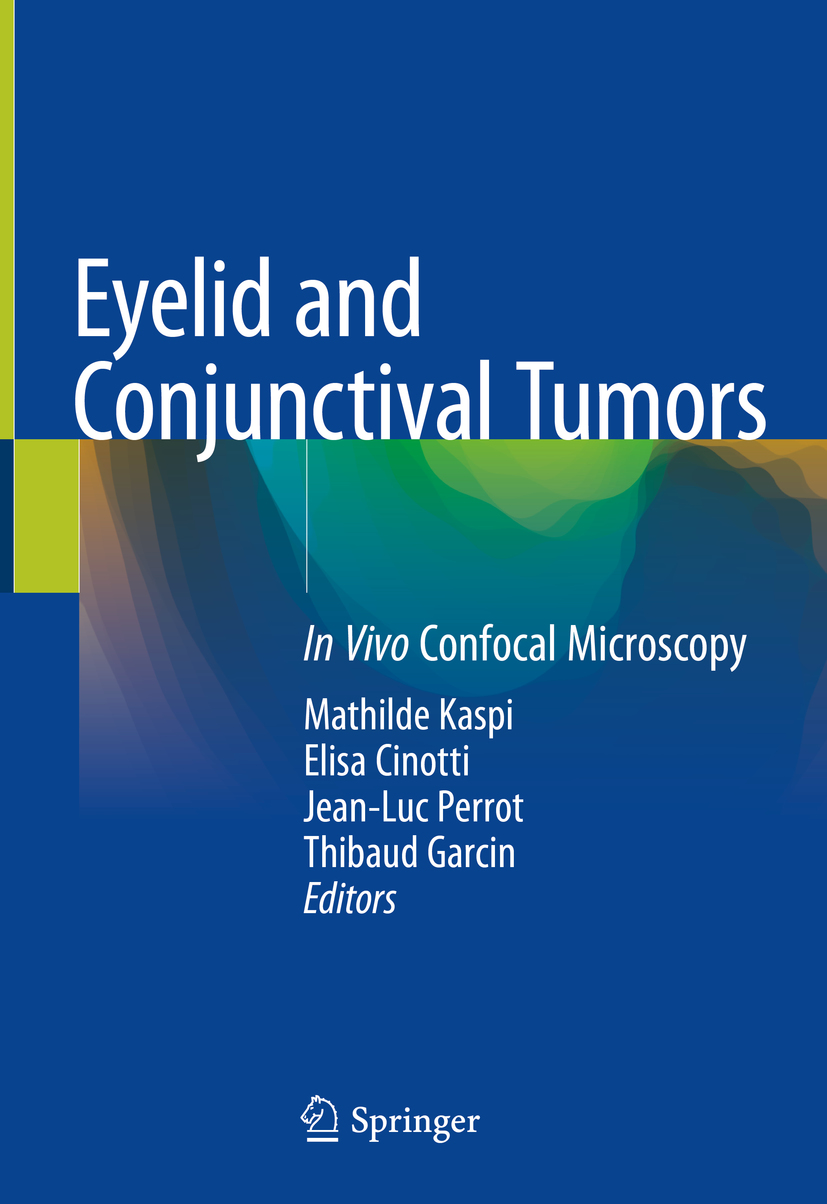Editors
Mathilde Kaspi
Department of Ophthalmology, Centre Hospitalier Universitaire de Saint-Etienne, Loire, France
Elisa Cinotti
Department of Dermatology, University of Siena, S. Maria alle Scotte Hospital, Siena, Italy
Jean-Luc Perrot
Department of Dermatology, Centre Hospitalier Universitaire de Saint-Etienne, Loire, France
Thibaud Garcin
Department of Ophthalmology, Centre Hospitalier Universitaire de Saint-Etienne, Loire, France
ISBN 978-3-030-36605-6 e-ISBN 978-3-030-36606-3
https://doi.org/10.1007/978-3-030-36606-3
Springer Nature Switzerland AG 2020
This work is subject to copyright. All rights are reserved by the Publisher, whether the whole or part of the material is concerned, specifically the rights of translation, reprinting, reuse of illustrations, recitation, broadcasting, reproduction on microfilms or in any other physical way, and transmission or information storage and retrieval, electronic adaptation, computer software, or by similar or dissimilar methodology now known or hereafter developed.
The use of general descriptive names, registered names, trademarks, service marks, etc. in this publication does not imply, even in the absence of a specific statement, that such names are exempt from the relevant protective laws and regulations and therefore free for general use.
The publisher, the authors, and the editors are safe to assume that the advice and information in this book are believed to be true and accurate at the date of publication. Neither the publisher nor the authors or the editors give a warranty, expressed or implied, with respect to the material contained herein or for any errors or omissions that may have been made. The publisher remains neutral with regard to jurisdictional claims in published maps and institutional affiliations.
This Springer imprint is published by the registered company Springer Nature Switzerland AG
The registered company address is: Gewerbestrasse 11, 6330 Cham, Switzerland
Preface
It was natural for us to state the two questions that preceded the genesis of this book and that the reader, too, is entitled to ask himself before acquiring and reading this book.
Why two of the co-editors of this book that deals with an ophthalmological area are dermatologists?
What exactly is the part of the ocular system explored in this book and what is the contribution of in vivo confocal microscopy to the study of this area?
We will answer the last question first for the purpose of clarity.
This book studies that part of the ocular system, which we will define as anterior, i.e. all the ocular structures with immediate access to the simple inspection of the eye and the touch, a definition that is more dermatological than ophthalmological.
This, in our opinion, is what makes this book so original because this part of the eye is on the border between dermatology and ophthalmology.
Although there are already magnificent books on confocal microscopy in ophthalmology, they focus on the cornea and the adjacent limbic region. However, the contribution of the dermatological practice and of skin-specific imaging techniques allowed us to examine the whole anterior part of the eye.
Being not attached to a support, our confocal microscopy camera dedicated to dermatology offered us the possibility to explore the first 300800 microns of all the different parts constituting the anterior ocular system (conjunctiva, eyelid and cornea)in vivoand at the microscopic scale. Confocal microscopy cameras dedicated to ophthalmology cannot access all these areas for purely mechanical reasons (because they are fixed on a support).
Most of our images have been acquired in reflectance mode, and only few in the fluorescence mode which is a research approach for the moment.
Why was this book co-written by dermatologists and ophthalmologists?
This book is the iconographic summary of 7 years of dermato-ophthalmological multidisciplinary consultations of confocal microscopy concerning any lesions of the anterior ocular system.
We wanted to share the richness of the iconography accumulated during this period as well as the experience acquired. The recruitment of our patients also derived both from dermatology and ophthalmology consultations. We had the audacity to make this hybrid medical book of dermatology and ophthalmology imaging. This book seemed to us to reflect the medical mutation that new imaging techniques and more particularly confocal microscopy cause.
The images form the framework of this book. These are many confocal microscopy images of course but also anatomopathological sections of the different tumors presented. It should always be borne in mind that the interpretation of confocal microscopy images is based on anatomopathology. Confocal microscopy is not intended to replace anatomopathology, but on the contrary is based on it.
We wanted ophthalmologists and dermatologists to have access to quality and commented images, in order to know the typical characteristics of this new confocal microscopy semiology for the main types of tumors affecting this anatomical area.
In its design, it is a work modelled on the classic great books of anatomopathology that show the characteristic aspects of the different types of lesions.
Confocal microscopy has a reputation of expensive technique requiring a difficult training and thus reserved for a few experts. We hope that this book will demonstrate, on one hand, that the images are not difficult to be interpreted and, on the other hand, that the system can be shared by two disciplines in order to pool the costs. In vivo confocal microscopy offers the clinician an additional help for the diagnostic and therapeutic management of the anterior ocular tumors, thus avoiding unnecessary excisions of benign lesions such as conjunctival naevi and supporting the clinical diagnosis of malignant tumors.
In conclusion, although current devices provide high-quality images at cellular resolution, we hope that the confocal microscopy and optics industries will be able to continue to develop new devices that are more efficient and less expensive than those currently available to us. We also hope that a future book will be published in a few years, as a result of international collaborations within a network of confocalists specialized in lesions of the anterior ocular system.
We cannot conclude this preface without mentioning that this book is the result of the collaboration between dermatology and ophthalmology, two disciplines that are closely linked by confocal microscopy, and it is also the testimony of a deep friendship that enabled us to acquire a common medical culture that we wish to share with our readers.
Jean-Luc Perrot
Elisa Cinotti
Loire, France Siena, Italy

